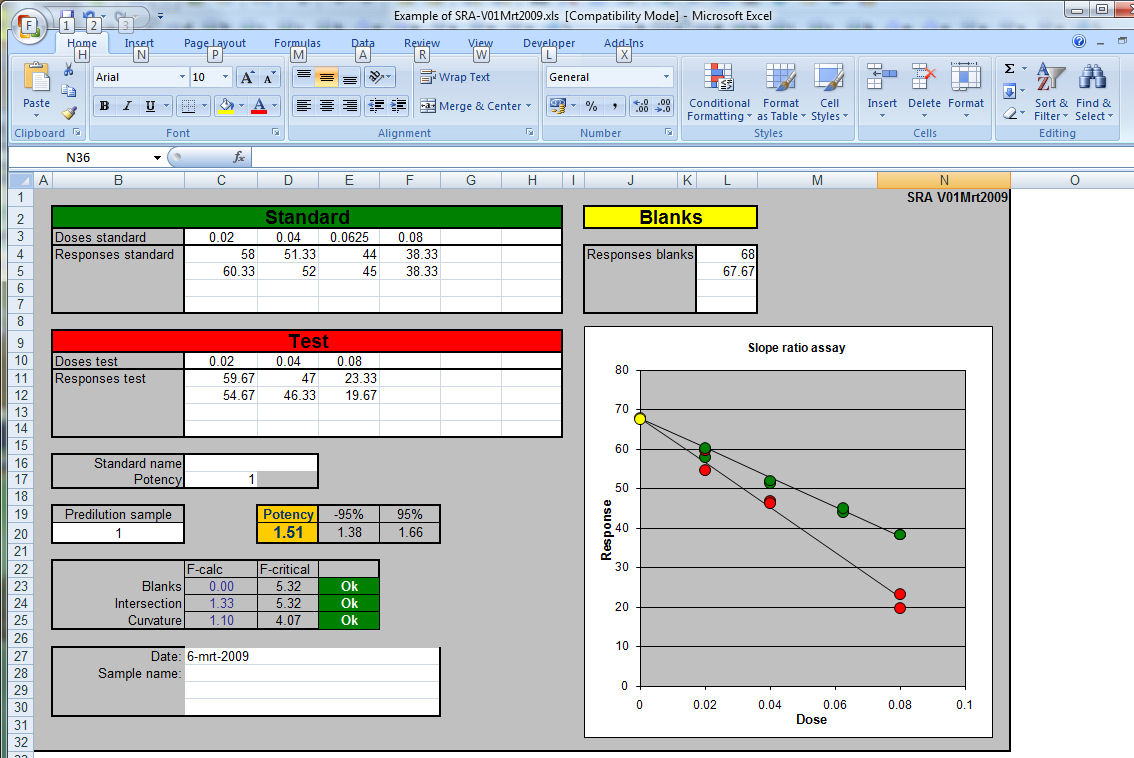<-- Back to calibration programs
In a slope ratio assay the responses of dilutions of a
standard are compared with the responses of dilutions of a test sample.
The doses (dilutions) are linear distributed, this in contrast with the
parallel line assay (PLA) where the logarithm of the doses is linear
distributed.
With the SRA the lines of the standard and sample must intersect at the
reponse of the blank.
A linear line is calculated through the dose-response points for the
standard with the equation:
Response = Sa * dosis + intercept
And for the test sample as:
Response = Ta * dosis + intercept
The two lines have an intersection point at dosis = 0 —
the intercept is identical in both equations.
The ratio of Sa/Ta is used to calculate the potency of the test sample.
SRA if often used in reaction rate test where the measuring intervals are
close together at the start of the reaction. D.J. Finney was one of the
first mathematicians who described SRA in detail.

The SRA presented here is written in
Microsoft Excel and is an copy of the method described by D.J. Finney
Two versions are available.
Version 1 march 2009 uses no Visual basic
macro's but in this version one can not see what responses are omitted.
In version 31 march 2009 a Visual Basic macro tests if responses are in
italic and/or bold and does not use these marked entries. The advantage is
obvious; one can see the deleted entries and one can include or exclude
points in the calculation easily by marking them.
Excel does not recalculate a sheet when a font is changed. Therefore one has
to force a recalculation by pressing F2 followed by Enter.
Download SRA without visual basic V01mrt2019
Download SRA with Visual basic V31mrt2019
SRA6x6 V16Aug2021
Enter the doses and at least two responses of the sample, the standard and the blanks of the test.
The calculated slope is multiplied by predilution and by the calculated potency of the standard. The three F-tests are used to validate the test Blank is to test if the calculated slope intersects with the mean of the blanks
Intercept tests if the standard and the sample lines intersect at dosis is zero.
curvature test if the line are straight and not curved.
If one of these F-tests is greater than the F-critical the calculated potency must be rejected.
